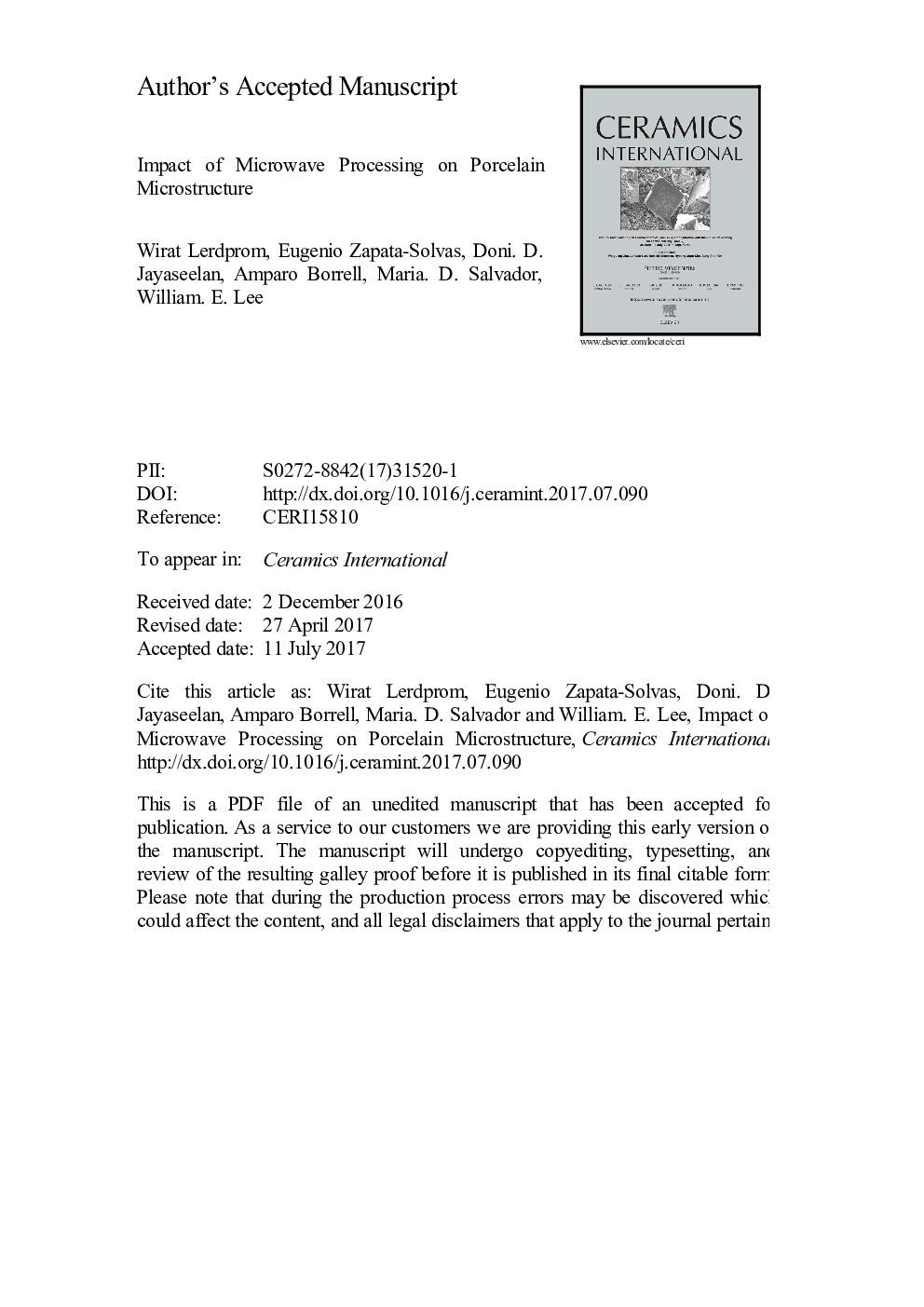| Article ID | Journal | Published Year | Pages | File Type |
|---|---|---|---|---|
| 5437885 | Ceramics International | 2017 | 20 Pages |
Abstract
Microstructural evolution on sintering of porcelain powder compacts using microwave radiation was compared with that in conventionally sintered samples. Using microwaves sintering temperature was reduced by ~ 75 °C and dwell time from 15 min to 5 min while retaining comparable physical properties i.e. apparent bulk density, water absorption to conventionally sintered porcelain. Porcelain powder absorbed microwave energy above 600 °C due to a rapid increase in its loss tangent. Mullite and glass were used as indicators of the microwave effect: mullite produced using microwaves had a nanofibre morphology with high aspect ratio (~ 32 ± 3:1) believed associated with a vapour-liquid-solid (VLS) formation mechanism not previously reported. Microwaves also produced mullite with different chemistry having ~ 63 mol% alumina content compared to ~ 60 mol% alumina in conventional sintered porcelain. This was likely due to accelerated Al+3 diffusion in mullite under microwave radiation. Liquid glass was observed to form at relatively low temperature (~ 900-1000 °C) using microwaves when compared to conventional sintering which promoted the porcelains ability to absorb them.
Related Topics
Physical Sciences and Engineering
Materials Science
Ceramics and Composites
Authors
Wirat Lerdprom, Eugenio Zapata-Solvas, Doni D. Jayaseelan, Amparo Borrell, Maria D. Salvador, William E. Lee,
